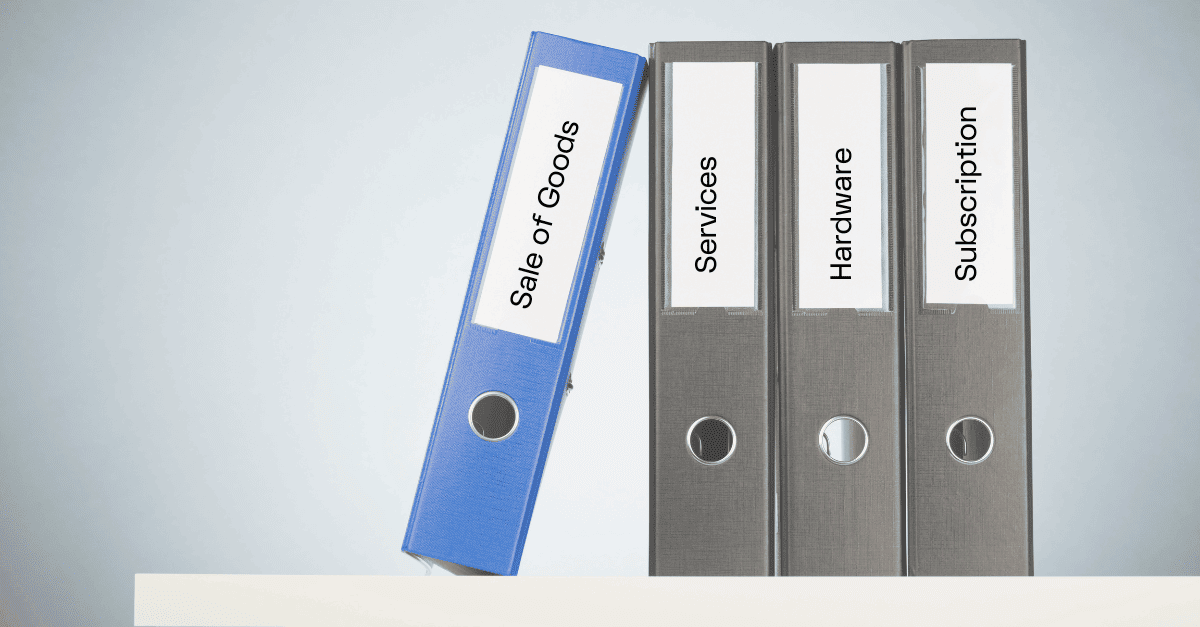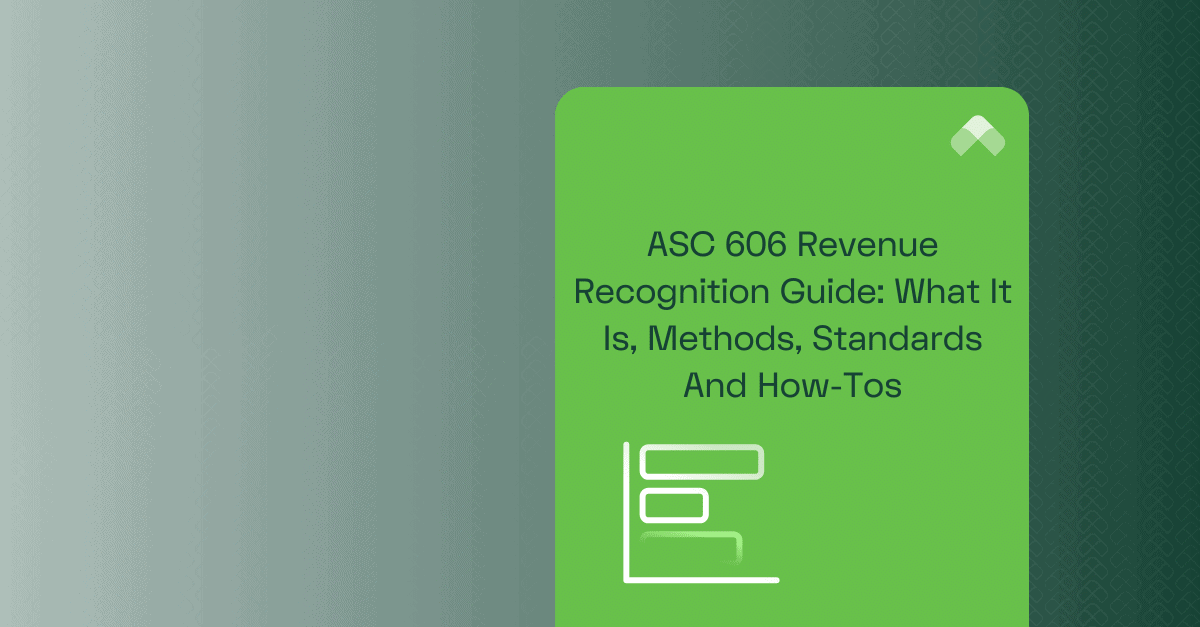Here’s an interesting fact: Over 60% of SEC enforcement actions against financial statement fraud can be traced back to improper revenue recognition.
Intentional or not, recognizing revenue at the wrong time is a very real compliance risk. So, how can you identify the right time? Much of it is linked to performance obligations. Accounting professionals know them as the goods or services promised to your customers.
But the details go a little deeper than that. What exactly constitutes performance obligations? How do you appropriately identify performance obligations? And how do they play a part in your revenue recognition operations? Read on to find out.
Understanding Performance Obligations
Under ASC 606 and IFRS 15, performance obligations are defined as distinct, contractually promised:
- Good or service
- Bundle of promised goods or services
- Series of goods or services that are materially the same and with the same pattern of transfer to the customer
Strictly defined, performance obligations are simply the promise itself rather than the actual delivery of the contractually agreed-upon task. Another key concept is buried in the word “distinct.” Essentially, this means the deliverables must benefit your customer.
Only once you’ve delivered upon your performance obligations can you recognize revenue that comes from them—regardless of down payments or any other exchanges before that.
This makes performance obligations central to accurate revenue recognition and reporting. But how can you identify them?
Steps to Identify Performance Obligations
Despite their apparent complexity, identifying your performance obligations can be distilled into a four-step process.
Step 1: Contract Review
This involves examining all promises made to the customer, whether explicit or implicit:
- Explicit promises are clearly stated in the contract, where the entity promises specific goods or services with details like delivery quantities, dates, and payment terms.
- Implicit promises are not specifically mentioned but implied based on industry or business norms. Implicit promises not itemized in a contract may represent distinct goods and services that must be tracked internally for proper recognition, similar to how post-contractual support (PCS) functions in software agreements.
With that in mind, make note of clauses that could imply additional obligations, such as hints of ongoing support post-purchase or contingencies that leave room for adjustments before final delivery.
Step 2: Assessing Distinct Goods or Services
Next comes identifying which goods and services are distinct and considered separate performance obligations.
How do you define “distinct?” According to ASC 606 and IFRS 15 guidelines, goods and services meet this criteria if:
- The customer can benefit from it on its own or in conjunction with other readily available resources.
- The promise to transfer the good or service is separately identifiable from other promises in the contract.
For example, imagine if a B2B software entity determines that its customization services are a distinct performance obligation. This is valid—assuming that:
- The software functions without these services, and
- The customer could receive such customizations from another vendor.
In this example, the customizations would be separately identifiable and therefore a separate performance obligation.
Step 3: Bundling and Unbundling
Multiple goods or services may sometimes be bundled into one performance obligation. Or a single offering might need to be unbundled into separate performance obligations.
Bundling might be appropriate when an entity promises goods or services that:
- Are highly interdependent or interrelated (e.g., a software license bundled with support or installation services)
- Significantly modify or customize each other (e.g., a cell phone service plan bundled with a warranty)
To illustrate, a construction company building a house would likely treat this as a single performance obligation despite involving multiple distinct goods and services.
On the other hand, unbundling might occur if those same services could be sold and used separately—for example, if the company drafts architectural designs, completes site analysis, and offers interior design services; each service is considered a separate performance obligation.
Step 4: Transaction Price Allocation
The final step involves pricing each performance obligation. The prices typically follow each distinct good or service’s relative standalone selling prices (SSP).
If SSPs are not directly observable, they must be estimated using approaches such as:
- Adjusted market assessment: An estimate based on existing competition and market conditions
- Expected cost plus margin: The base cost of fulfilling the obligation with an appropriate margin for profit
- Residual approach: Total transaction price (if available) subtracted by the sum of observable SSPs
Challenges in Identifying Performance Obligations
As commerce shifts online and towards subscription services, performance obligations become harder to properly define.
These challenges are exacerbated by:
- Complex contracts: Technology and construction industries often have multiple deliverables, each with distinct goods, services, and revenue recognition patterns.
- Changing agreements: Even the smallest modification can have cascading effects from a revenue perspective. A customer seeking to add additional service or alter project scope may require a full performance obligation reassessment.
These challenges only compound in startups and niche industries. For example, a B2B SaaS company may need to determine whether updates and upgrades are bundled.
Accounting for Performance Obligations
Once performance obligations are identified, they must be accounted for in line with revenue recognition principles.
Revenue should be recognized as the company satisfies each performance obligation, either all at once or over time, depending on the nature of the obligation.
For example, if an entity performs continuous services over a year on a $12,000 contract, revenue could be recognized on a $1,000 monthly basis. On the other hand, if a company delivers a single $12,000 product, revenue would be recognized when the customer gains control of that product.
Tools and Resources
Managing performance obligations can be complex, especially for companies with numerous or intricate contracts that include a variety of goods or services. Particularly challenging scenarios may warrant consulting with accounting professionals or auditors.
For more information on performance obligations and similar revenue recognition resources, consider the following:
- PwC, a leading provider of business advisory services
- IFRS Community, a knowledge base for all things relating to IFRS standards
- Deloitte Accounting Research Tool (DART) for GAAP and SEC compliance information
- BDO, an advisory firm with performance obligation advice specifically for the software industry
In addition, various software solutions can help you ensure compliance. However, standard ERPs and CRMs usually don’t have these capabilities.
You’ll need a specialized solution.
RightRev: Your Partner in Performance Obligation Tracking
From identifying distinct goods and services (by ASC 606 and IFRS 15 definitions) to assigning appropriate revenue rules for each performance obligation, RightRev’s platform is built for scalable revenue management.
Whether your business deals with one-time sales, subscription models, or usage-based pricing, our configurable revenue rules and real-time visibility tools ensure every performance obligation gets tracked and reported accurately.
If you’re looking to take control of your revenue recognition processes, RightRev is your robust, reliable answer.
Cut down on the spreadsheets and get back to what matters. Try a free demo today.




